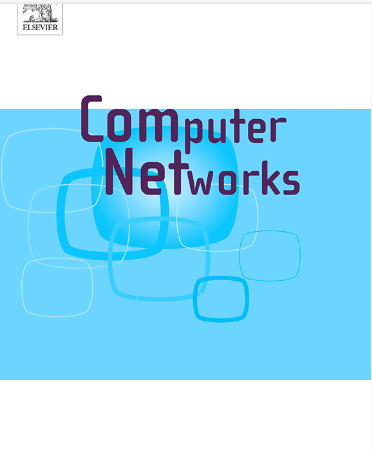基于联合DRL和gcn的元场景云边缘协同缓存优化
IF 4.6
2区 计算机科学
Q1 COMPUTER SCIENCE, HARDWARE & ARCHITECTURE
引用次数: 0
摘要
虚拟世界的迅速崛起需要深度沉浸和高响应的虚拟体验,需要超高的传输速度和极低的延迟。由于计算能力、存储容量和网络带宽的限制,集中式数据处理方法在管理大规模用户数据时面临越来越多的限制。为了解决这些挑战,本文提出了一个用于元场景的云边缘端传输框架,旨在优化资源分配,减少延迟,提高渲染效率。本文提出了一种分布式轨迹预测(DTP)算法,并开发了一个利用FastDTW算法预测轨迹段和计算子场景流行度的分布式轨迹预测集群系统。引入基于GCN和DRL的实时协同缓存优化方案(GCNAC),根据子场景的流行程度动态调整缓存策略,从而提高缓存命中率,降低缓存替换频率。仿真结果表明,GCNAC方案在不同容量的目标子场景缓存命中率和传输延迟方面明显优于现有方法,边缘替换频率降低43.49%。本研究为虚拟世界场景的终端预渲染提供了一个实用的解决方案,为场景渲染技术和生成式虚拟世界的发展提供了理论支持和实践指导。本文章由计算机程序翻译,如有差异,请以英文原文为准。
Joint DRL and GCN-based Cloud-Edge-End collaborative cache optimization for metaverse scenarios
The rapid emergence of the Metaverse demands deeply immersive and highly responsive virtual experiences, necessitating ultra-high transmission speeds and extremely low latency. Centralized data processing methods are facing increasing constraints in managing large-scale user data due to limitations in computing power, storage capacity, and network bandwidth. To address these challenges, this paper presents a Cloud-Edge-End transmission framework for Metaverse scenarios aimed at optimizing resource allocation, reducing latency, and enhancing rendering efficiency. We propose a distributed trajectory prediction (DTP) algorithm and develop a distributed trajectory prediction cluster system that utilizes the FastDTW algorithm to predict trajectory segments and calculate subscene popularity. Additionally, a real-time collaborative cache optimization scheme (GCNAC), based on GCN and DRL, is introduced to dynamically adjust caching strategies according to subscene popularity, thereby improving cache hit rates and reducing cache replacement frequencies. Simulations demonstrate that the GCNAC scheme markedly outperforms existing methods in target subscene cache hit rates and transmission latency across varying capacities, achieving a 43.49% reduction in edge replacement frequency. This study provides a practical solution for terminal pre-rendering of Metaverse scenes, offering both theoretical support and practical guidance for the development of scene rendering technologies and the generative Metaverse.
求助全文
通过发布文献求助,成功后即可免费获取论文全文。
去求助
来源期刊

Computer Networks
工程技术-电信学
CiteScore
10.80
自引率
3.60%
发文量
434
审稿时长
8.6 months
期刊介绍:
Computer Networks is an international, archival journal providing a publication vehicle for complete coverage of all topics of interest to those involved in the computer communications networking area. The audience includes researchers, managers and operators of networks as well as designers and implementors. The Editorial Board will consider any material for publication that is of interest to those groups.
 求助内容:
求助内容: 应助结果提醒方式:
应助结果提醒方式:


